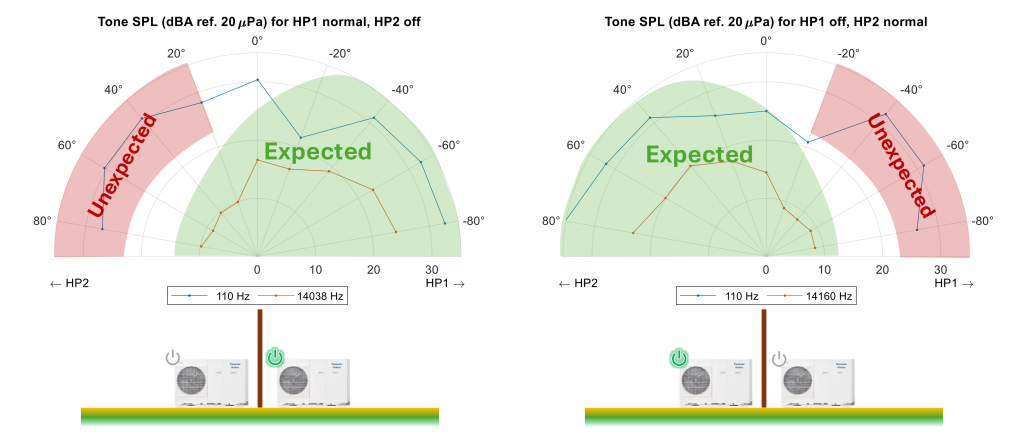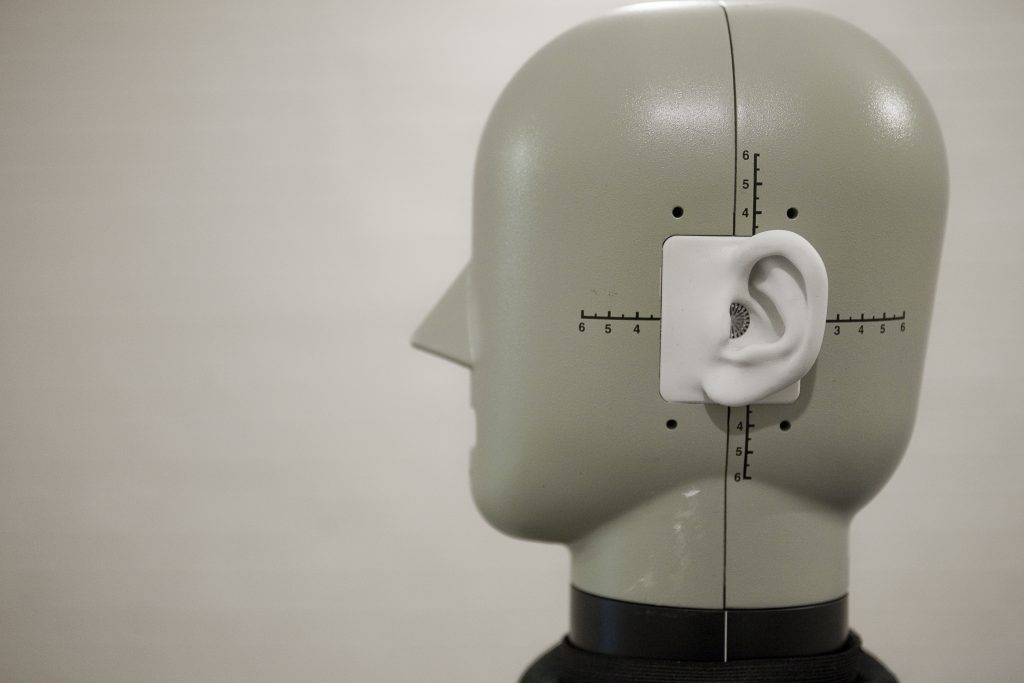In September 2025, the Future Homes Acoustics team published a report on fieldwork undertaken in collaboration with the Heat Pump Association. The full report on both field studies can be found on the HPA website here. You can watch Jonathan Hargreaves explain the research here.
Net Zero targets in the UK require a shift to low or zero carbon emission technology, which is supported by the UK government funding to support the installation of Air Source Heat Pumps (ASHPs) for domestic heating provision. ASHPs offer better thermal efficiency than traditional boiler systems and have no direct carbon emissions. Research is needed to understand the interaction and impact of multiple ASHPs operating in close proximity or in cases in which ASHPs are numerous within a small residential area. This study focuses on the noise from ASHPs rather than ground source heat pumps because the latter are not subject to the same noise testing as ASHPs due to their configuration.
The report presents the key findings of two field studies: i) a measurement for the acoustic characterisation of a pair of ASHPs in close proximity; and ii) a further measurement of a single ASHP at noise sensitive locations at neighbouring properties. The ASHPs measured were located in the back gardens of dwellings at a new-build housing estate in Nottinghamshire, as shown in Figure 1.

The analysis of the data gathered in these two studies suggests that:
- There is no change in compliance status between Microgeneration Certification Scheme (MCS) 020 (2019) and MCS 020 a) (2025) calculation protocols for the specific case evaluated in this study. In addition, MCS calculations for ASHP noise limits were in good agreement with measured sound levels.
- Simple power summing (i.e., logarithmic dB addition) of noise from two ASHPs, as is standard in environmental noise assessments, was seen to be adequate for the case studied. There were some microphone positions where the calculation underpredicted the SPL measured when both ASHPs were operating. These underpredictions could be explained through adverse conditions that affected the final measurement, however; they will be further investigated in future studies. For unaffected microphones the agreement between power summing calculations and measurements was very close.
- Low-frequency tones are more prominent and audible in the neighbouring property (Figure 2), with a wooden fence (with boards approximately 15mm thick) providing minimal sound attenuation for this frequency range. This emphasises the importance of selecting the appropriate placement and orientation of the ASHP, and potentially a need for fences with better acoustic performance at low frequencies.
- There is no confirmation of significant low frequency interaction between the closely spaced ASHPs measured under the specific operation conditions tested. However, further investigation is recommended to investigate human (psychoacoustic) perception of such low frequency tones.
A subsequent study is planned and will focus on the case of multiple ASHP units operating in a small residential area. For more information on the wider Future Homes Acoustics project, click here.

